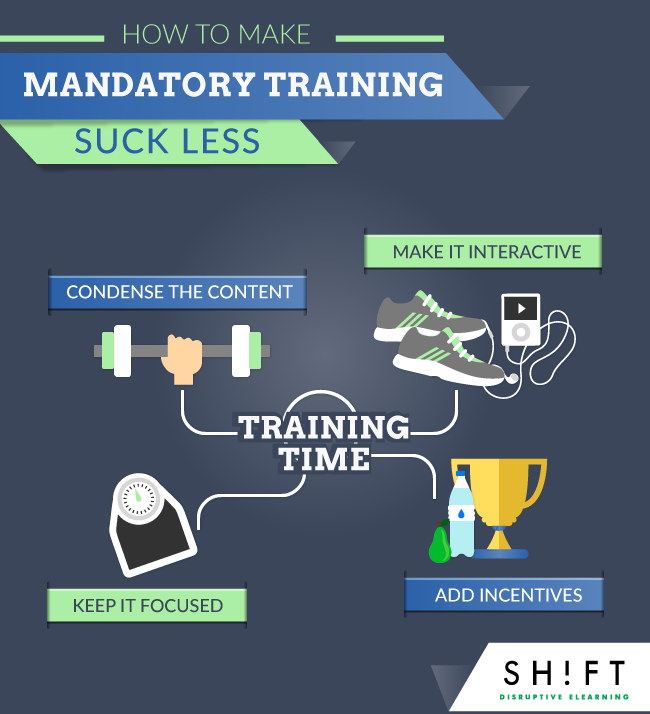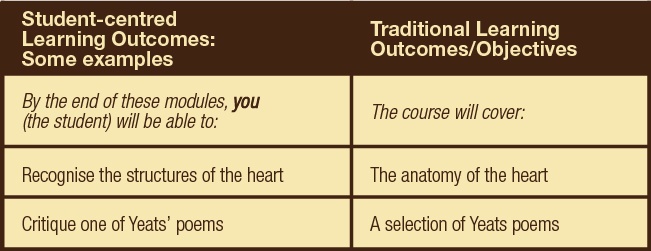Learning is mentally taxing.
So, why would you assume that your employees want to spend additional time learning something, especially when you’ve labeled it "mandatory"?
Here are some synonyms that are dancing through the minds of your employees as soon as they receive your email about the new “mandatory” training course:
COMPULSORY; Unavoidable; ENFORCED; Obligatory; and a horde of other disfigured words dancing in the distance, chanting:
“THERE IS. No. Escape.”
Given your position, you may understand the significance of the course and its relation to bigger, strategic organizational goals. Your employees don’t. And your task is to pique their interest, engage them, and continuously compel them to keep on learning.
This is only possible if you learn from the one trait that all ads, marketing content, and compelling stories have in common: they value their viewers’ time, their knowledge and capacity to absorb the content.
Here are some simple tricks to get learners to buy into mandatory training:

1) Condense the Content — Create Mini Courses
First, understand your employee’s focus as a scarce resource. Then, accept that people will skim and scan your content rather than read everything in detail.
Shorter training courses engage employees better and allow them to retain more knowledge. Use the following tips:
- Break down the content into short modules of 10–20 minutes each. Even the busiest employees can find the time to go through the course if it promises quick returns (e.g. during commute)
- Encourage recap and use of resources — Offer opportunities for gaining feedback so that employees can verify policies.
- Structure the content so that the objectives, learning outcomes, and core content are communicated early on (within the first 5 minutes).
- Create single concept modules — This reduces cognitive overload and makes it easier for employees to learn and absorb the content faster and longer.
- Short-form reading works well on screen. Keep your paragraphs short and your sentences simple (Online readers tend to skip large blocks of text.)
2) It's About Your Learners, Not You!
Before you even begin your eLearning course design, you have to understand your target audience. Know your target learners in terms of their job description, roles and responsibilities, experience, and their existing knowledge level. Use this information to include practical examples and real-life scenarios and problems that the course is meant to enhance their lives.
By knowing their existing knowledge, a lot of course material can be offloaded in supplementary resources (which they may view if they want to recap a concept). Give your employees the option of leveraging their existing knowledge base to build on newer knowledge. Some employees may not need to go through each topic in the course in their entirety. Use warm up quizzes at the beginning of the course and give learners the option of “checking off” content from the course outline before continuing. It is a great way of appealing to their experience and expert knowledge and hence increases engagement.
Idea: Instead of describing the course content in the objectives, find ways to focus on what the students will be able to DO. See these examples:

Image Source: Student-centred learning: What does it mean for students and lecturers?
Keeping the course focused improves its effectiveness and hence the ability of employees to relate to the material.
3) Don't Put People to Sleep — Make it Interactive
Simply sitting listening/watching/ reading theory will become boring. Breakthrough with interactive activities that split information and avoid “format load” i.e. loading the mind by continuously using a single type of brain function (e.g. videos only, audio only, written theory only, etc.).
Ramp the engagement by using a blend of content format, ranging from quizzes, drag-and-drop exercises, simple information tabs to videos. Furthermore, you can add clickable content (text or graphics) to keep the learner engaged. It gives them an opportunity to work at their pace — by drilling further down into the information and hence stay with on the information as long as they need.
Finally, never forget the power of stories and examples to illustrate your points. Stories can enrich and make memorable even dull, drab, and complex technical subject matter. For example, a scenario can be an excellent way to teach employees what sexual harassment is.
Read: A 5 Step-Plan to Create Your Own Scenario-based eLearning Course
4) Add Incentives to Increase Engagement
Reward employees for their achievements. A simple certificate, a badge of honor, or a remark on a job well done goes a long way in increasing engagement. And once the course is complete, make sure you update it. No one likes repeating the same information, and by revising existing content in agreement with new realities and market changes, you can keep it current and engaging.
Read: 8 Types Of eLearning Incentives Programs
Read: Using Carrots in eLearning
You may have the authority to make your employees spend their time on the training, but unless you can engage them and naturally compel them to learn, you will not be making any headway!








